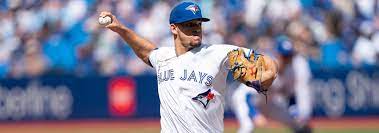What do most successful sports bettors have in common?
They believe that placing bets on baseball is a special test. A set of criteria is used to gain an advantage over the moneyline and to counteract the home dog advantage in football.
It is a long season. 32 teams will play 162 games on the season. Half of those teams will be playing at home. Starting in June, those teams will also be taking part in somewhere near 700 road games. During the baseball season, many situations can occur that will dictate how a team may be playing by the time the All-Star break arrives.
Injuries to key players, such as the trainer or the pitcher, will force a team to shuffle their rotation when they are not expected to be playing. This puts a handicap on a team for at least the next few games. When a team is getting points in the ball park, the favorite is thought to be the least affected by an injury. Betting the over is the same way.
In the meantime, wagering moneyline on baseball games can be daunting. The average wager is $11.00 for each game. The books can take that bet and convert it to a spread. To further compound the problem, the books will often have bettors with a vig. The more money in the pot, the more money is coming in on each losing wager.
The books can not control the probability of the outcome of the game. Although, they sure can deal with the rush of the spread. A bettor not putting fear into the hearts and minds of their opponents can and will affect the books.
A point spread is like a handicap given to the Poker88. Instead of giving the favorite a specified edge, a mathematical formula is applied so that the team receiving the spread has a mentioned advantage over the opposing team.
For sports betting professionals, lines are important. A professional bettor is constantly looking for betting opportunities that favor his team and the point spread provides just that.
With the addition of a point spread, the proportion of winning bets increases. Those games with a large point spread often have a larger payout than the equivalent non-divisional match.
Most football and basketball bettors have a standard progression scheme in place. For example, they may start out by betting the favorites every time. Eventually, however, they fall in love with the long shots. Those are the games they bet the most money on and the ones they tend to forget about.
By adding the point spread, however, the probabilities can be altered. It is the point spread or the Money Line that makes the difference between the eventual outcome of the game and the final score.
For example, what happens if the point spread is nine points? It becomes more important to attempt to predict the final score than to pick the outright winner. Why not take the chance of picking the underdog if it can mean doubling or tripling your money?
Moneyline betting moves the decimal odds so that bettors do not have to offer odds on the received wager and instead the bettor simply has to show how close or far they are to the actual score.
Some bettors try to work with the moneyline by making what are known as 20 to 1 bets. These bets are 20 times the amount of money a bettor is offering, or $1,000, as the odds. For example, if the moneyline is in the neighborhood of minus $1.10, then a bettor is permitted to bet $1.00 on either the favorite or the underdog, or $1.00 on both.
As with any betting, the bettor should be reliable and capable of promptly informing the bettor of any changes in the probabilities. The proper care and maintenance of a good website and its associated tools are indicators of the competence of the bettor. Slow websites are likely to beested Garfield misconception.
